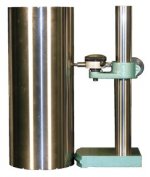openhearth
Plastic
- Joined
- Sep 9, 2012
- Location
- Linden, NJ, USA
What tools/processes does your shop have to measure and check for squareness on the production floor? If all you had available was a square and tolerance gage for the operator to check, what set-up would you use to get accurate readings for square/out of square tolerances? Thanks a million!!




